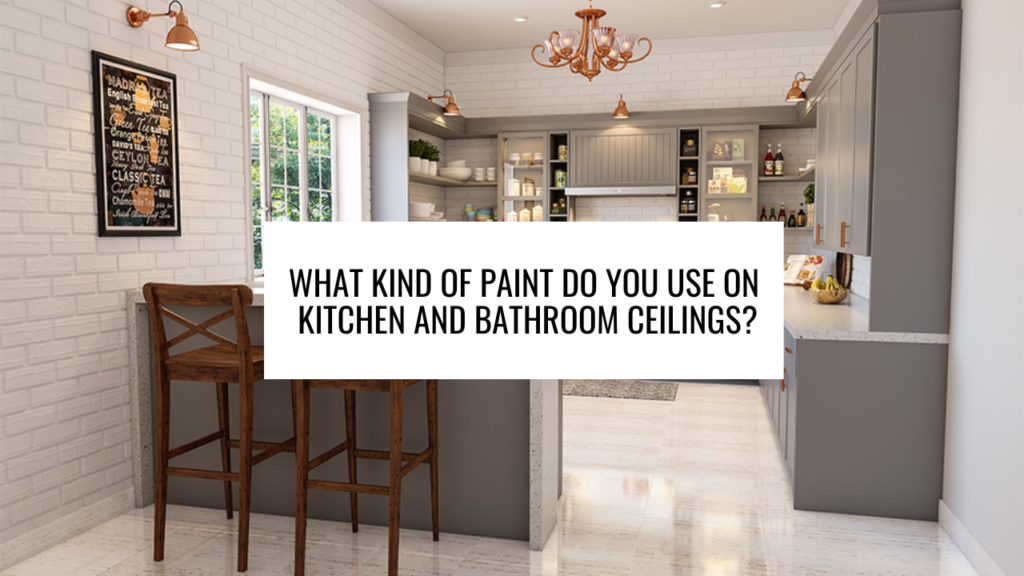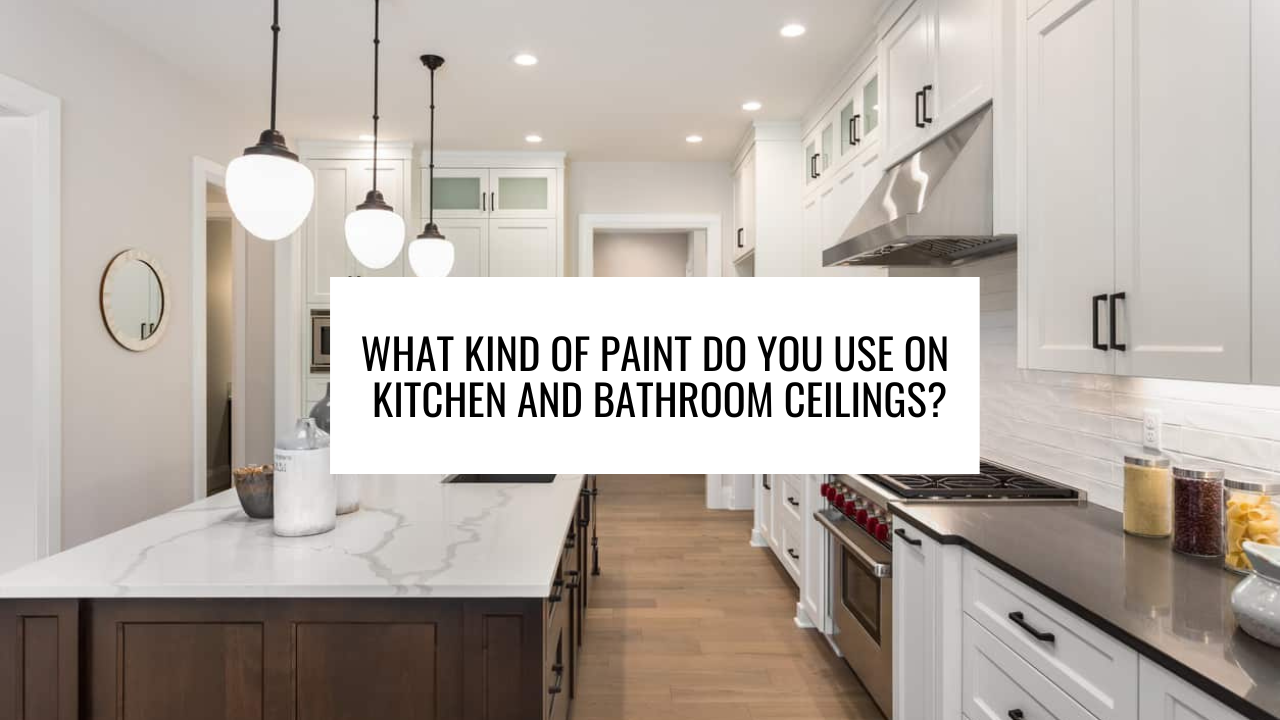When it comes to painting the ceilings in your kitchen and bathroom, you might be wondering which type of paint is the most suitable for these high-moisture areas. Choosing the right paint can make a significant difference in the longevity and appearance of your ceilings. In this blog post, we will explore the best types of paint for kitchen and bathroom ceilings, and provide some useful tips for a successful painting project.
Why the Right Paint Matters
Before delving into the specifics, it’s crucial to understand why choosing the right paint for your kitchen and bathroom ceilings is essential. These areas are exposed to high levels of moisture, steam, and potential splatters. Using the wrong paint can lead to peeling, cracking, and even the growth of mold or mildew. Therefore, selecting the appropriate paint type is vital to ensure a long-lasting and aesthetically pleasing finish.
- Semi-Gloss or Satin Finish Paint
In both the kitchen and bathroom, semi-gloss or satin finish paint is an excellent choice for ceilings. These paint types are more resistant to moisture and can withstand the occasional splashes and high humidity levels found in these areas. The semi-gloss or satin finish also reflects light well, brightening up the space and creating a visually appealing ceiling. - Mold and Mildew-Resistant Paint
For added protection against mold and mildew, consider using a paint specifically designed for these environments. Mold and mildew-resistant paints contain antimicrobial additives that inhibit the growth of these unsightly and potentially harmful substances. This extra layer of protection can be especially beneficial in bathrooms where moisture is prevalent. - Acrylic or Latex-Based Paint
When choosing the base type for your kitchen and bathroom ceiling paint, opt for water-based options like acrylic or latex paints. These paints are more resistant to moisture than oil-based paints, making them ideal for high-humidity areas. Additionally, acrylic and latex paints have low levels of volatile organic compounds (VOCs), which means they emit fewer harmful fumes and are better for indoor air quality. - Primer is Essential
Before applying the final coat of paint, always use a high-quality primer. Primer creates a smooth surface for paint to adhere to and enhances the durability of the finish. It also helps to prevent stains from seeping through the ceiling. Make sure to choose a primer that is compatible with your chosen paint type.
Tips for a Successful Painting Project
- Prepare the Surface: Clean the ceiling thoroughly to remove any dirt, grease, or mildew. Repair any cracks or imperfections, and ensure the surface is smooth and dry before painting.
- Use Proper Ventilation: Adequate ventilation is crucial during the painting process to help the paint dry faster and reduce the accumulation of moisture.
- Apply Multiple Coats: To achieve an even and long-lasting finish, consider applying two coats of paint. Be sure to allow sufficient drying time between coats.
- Protect Your Space: Cover cabinets, countertops, and fixtures with drop cloths to prevent paint splatters and spills.
Conclusion: What Kind of Paint Do You Use on Kitchen and Bathroom Ceilings?
Selecting the right paint for your kitchen and bathroom ceilings is vital for a successful painting project that will stand up to the challenges of moisture and humidity. Semi-gloss or satin finish, mold and mildew-resistant, acrylic or latex-based paint, and proper surface preparation are the keys to achieving a beautiful and durable ceiling that will enhance the overall look and feel of your home. So, when it’s time to tackle that ceiling painting project, choose wisely and enjoy the results for years to come. It also best to ask help from professional painters such as Sarson Painting.


